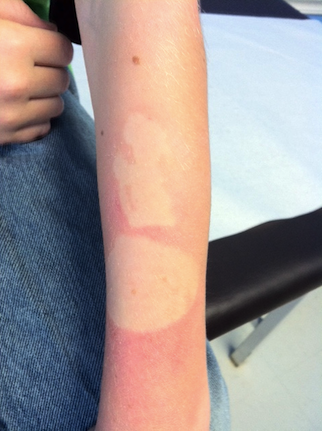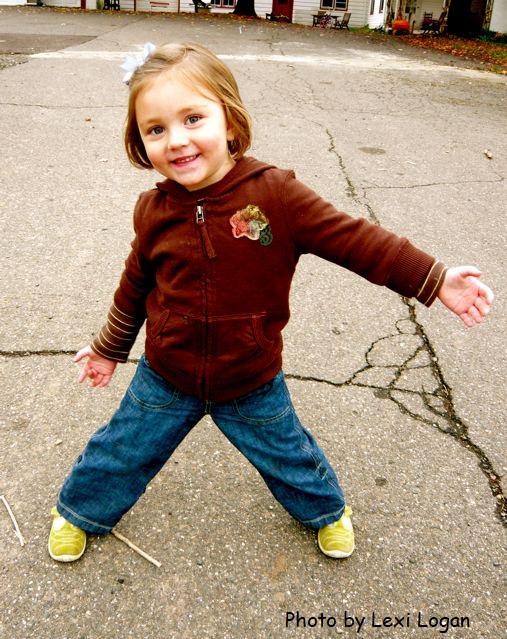What’s for dinner? ideas from our kitchen tables
After we complete a Two Peds in a Pod planning or edit session, our conversation inevitably turns to the question, “What are you cooking for dinner tonight?”
We know parents are always searching for simple ways to move beyond macaroni and cheese suppers. Here are two chicken dishes Dr. Kardos’s kids love and one tofu dish Dr. Lai’s children enjoy. For picky eaters, please note each item is well demarcated- no food has to “run into” or “touch” the other items. All can be eaten with a fork or with fingers for younger toddlers. They have flavors that adults like but are not too strongly flavored to turn a kid off. Best of all, they are easy to prepare.
Gram mom’s Chicken-in-a-Pot
Need: One 5-8 lb oven stuffer roaster chicken, carrots, onions, spices, cast-iron pot/dutch oven
Rinse off chicken and discard innards/gizzards. Pat dry. Sprinkle with spices that are kid friendly (no hot pepper unless your child really likes it). I use garlic powder, onion powder, salt, and tarragon. Place chicken into a cast-iron pot/Dutch oven. Add cut up carrots or “baby” carrots and either frozen pearl onions or a fresh onion chopped up. Other vegetables that will not fall apart/become mush would work as well. DO NOT ADD WATER.
Cover the pot, place on stove on low heat, and cook for 2-3 hours, until chicken is tender. It makes its own juices as it cooks so you never need to add water. When done, the chicken falls off the bones with minimal prompting. Carefully discard bones.
Result: easy to chew, pleasantly but not strongly flavored chicken, and cooked carrots. Dr. Kardos’s kids love to eat this with applesauce (two like to dip the chicken), raw carrots (only one of her kids likes cooked carrots), rice or noodles (juices from chicken taste great on either one) and fresh strawberries or other kid-pleasing fruit.
 A ma’s (Taiwanese for gram mom) easy Tofu
A ma’s (Taiwanese for gram mom) easy Tofu
Need: extra firm or firm tofu, rice, soy sauce, sesame oil, dried basil (Mrs. Dash has a tomato-basil-garlic spice mixture which is great, but tough to find)
Cut a block of tofu into one-third inch thick square pieces (approximately one and one half inch by one and one half inch). Liberally coat the bottom of a frying pan with sesame oil, add tofu and soy sauce, sprinkle dried dried basil over pieces. Cover and cook on high heat until starting to brown, then flip pieces over and cook on medium heat until other side starts to brown. For the picky kid, mush with a fork into rice and serve in a big bowl with fruit and vegetables on a separate plate. For everyone else, consider adding pepper and serve over steamed white or brown rice.
Mom mom’s baked chicken
Need: Boneless/skinless thicker cut chicken breasts, herb or Italian flavored breadcrumbs, grated parmesan cheese, butter (or Smart Balance).
Melt butter in one bowl. In another bowl, mix equal parts breadcrumbs and parmesan cheese.
Rinse chicken, pat dry. Dip the chicken first into the melted butter, then into the breadcrumb mixture until well coated, then place onto baking pan. Drizzle any remaining melted butter onto the chicken. Bake at 350° for 25-30 minutes (until chicken is cooked through).
Serve with rice, noodles, couscous, or bulgur wheat, salad or frozen mixed vegetables that steam right in the bag, and fresh pineapple or other kid-pleasing fruit.
Bon Appetite,
Julie Kardos, MD and Naline Lai, MD
©2011 Two Peds in a Pod®
 Picture the Mission Impossible theme song in your head… da da da DUM DUM da da da DUM DUM dadada…dadada…dadada…DA DA! Keep this background music playing as you read.
Picture the Mission Impossible theme song in your head… da da da DUM DUM da da da DUM DUM dadada…dadada…dadada…DA DA! Keep this background music playing as you read. All acetaminophen (e.g., Tylenol) will soon be made at the same concentration, the Consumer Healthcare Products Association announced recently. In the past, manufacturers made most infant formulations more concentrated (thicker) than children’s formulations so parents would not need to give as much liquid to babies. However, this difference in concentration was the
All acetaminophen (e.g., Tylenol) will soon be made at the same concentration, the Consumer Healthcare Products Association announced recently. In the past, manufacturers made most infant formulations more concentrated (thicker) than children’s formulations so parents would not need to give as much liquid to babies. However, this difference in concentration was the 
 As spring break approaches, here are some ways to handle sickness while traveling with your children when you are far away from your children’s primary care provider.
As spring break approaches, here are some ways to handle sickness while traveling with your children when you are far away from your children’s primary care provider. Recently I had the pleasure of taking a three-year-old neighbor out to dinner. My own kids and I greatly enjoyed our three-year-old friend’s conversation and antics so afterwards I decided to write about three-year-olds.
Recently I had the pleasure of taking a three-year-old neighbor out to dinner. My own kids and I greatly enjoyed our three-year-old friend’s conversation and antics so afterwards I decided to write about three-year-olds.  Remember that funny Sesame Street sketch when Ernie has a banana in his ear and his buddy Bert keeps asking Ernie why he has a banana in his ear? Ernie answers, “I can’t hear you Bert, I have a banana in my ear!” Ernie’s hearing loss was easily remedied by removing the banana. Temporary hearing loss produced by infection and fluid in the middle ear is remedied by removing the infection and fluid. Ear tubes (myringotomy or tympanostomy tubes) inserted into the eardrum will allow clearing.
Remember that funny Sesame Street sketch when Ernie has a banana in his ear and his buddy Bert keeps asking Ernie why he has a banana in his ear? Ernie answers, “I can’t hear you Bert, I have a banana in my ear!” Ernie’s hearing loss was easily remedied by removing the banana. Temporary hearing loss produced by infection and fluid in the middle ear is remedied by removing the infection and fluid. Ear tubes (myringotomy or tympanostomy tubes) inserted into the eardrum will allow clearing. In Part 1 of our talk, we presented the problems with pediatric obesity and provided six seemingly simple rules to follow that can help encourage your kids to become or maintain a healthy weight. But why is it so hard to follow these rules? In Parts two and three of our talk, we play out several common scenarios that illustrate our culture of over eating and suggest ways to change this culture.
In Part 1 of our talk, we presented the problems with pediatric obesity and provided six seemingly simple rules to follow that can help encourage your kids to become or maintain a healthy weight. But why is it so hard to follow these rules? In Parts two and three of our talk, we play out several common scenarios that illustrate our culture of over eating and suggest ways to change this culture.